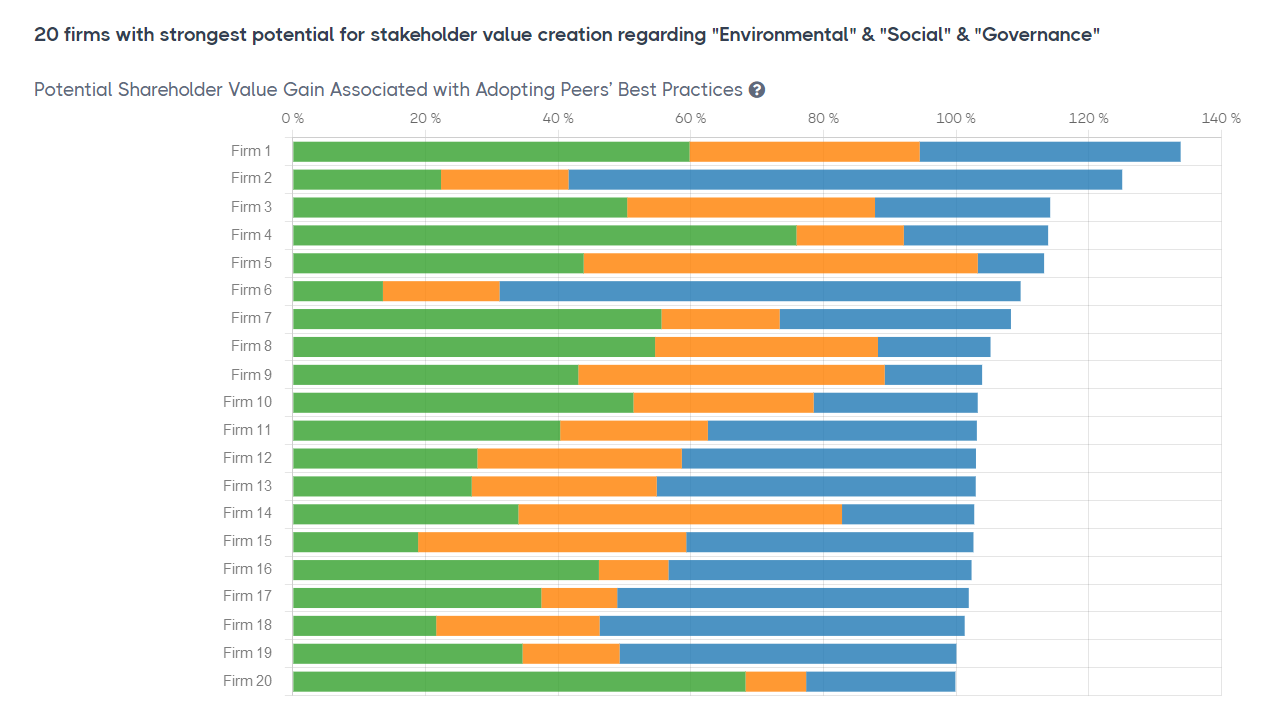Screen all Firms
Explore how improving 13 key ESG variables could raise the valuation of over 2500 firms worldwide
Why an Engagement Maximiser?
Improving material E, S or G practices can boost shareholder value. The intuition is simple: stronger ESG means more resilient corporates, which financial markets price accordingly.
You can use the Engagement Maximiser to find firms where ESG improvement(s) have the highest potential for shareholder value creation.
Access to this tool is restricted.
Typical results are pictured below.
